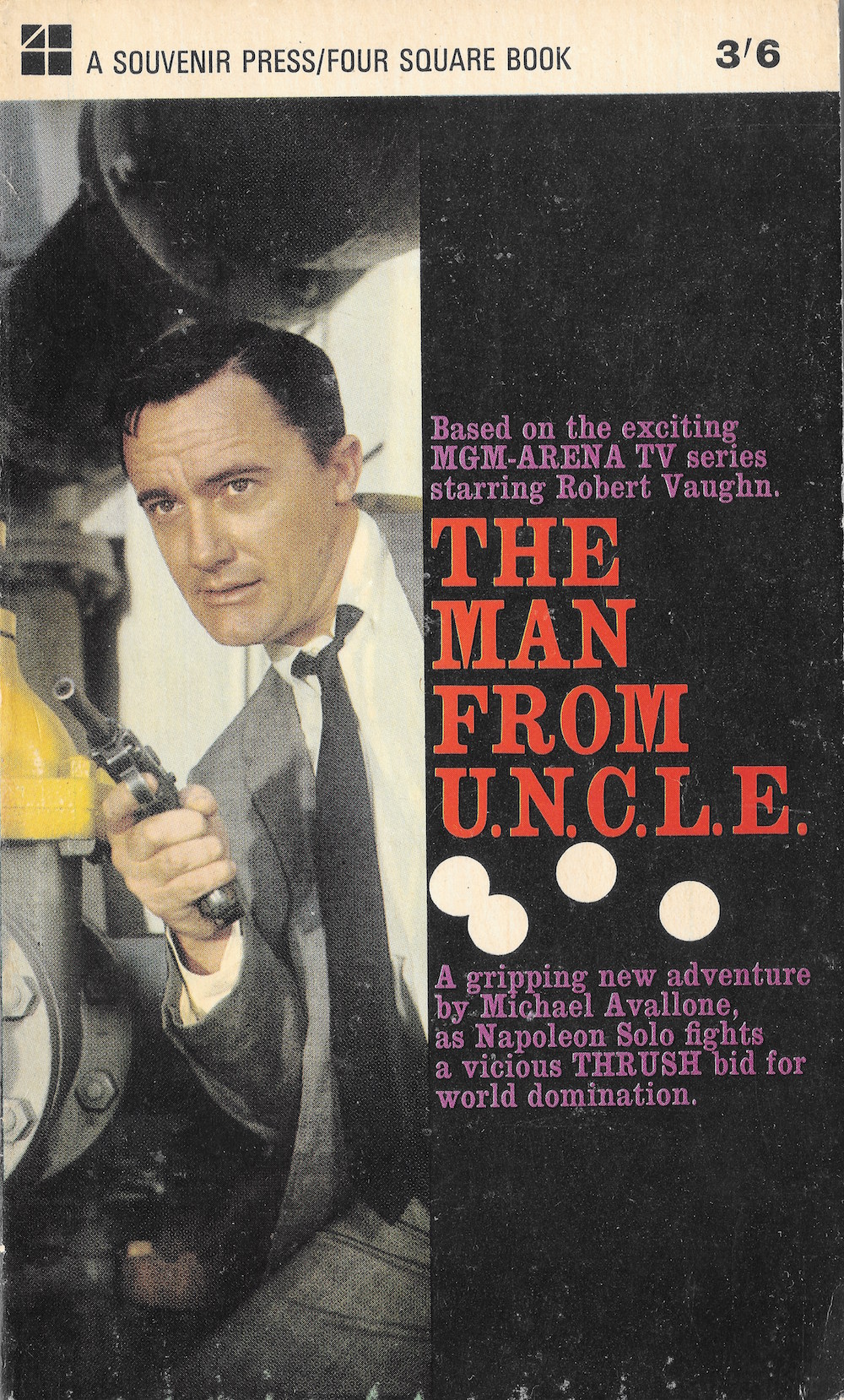
My brief career as a secret agent began after I’d graduated from Thunderbirds and started watching The Man from U.N.C.L.E. I was four or there abouts. Spies, it seemed to me, were smart, sassy, assiduous in their work, and impeccably dressed. This was my first lesson in being a spy: to be a man of action, you required a strong moral code and the appropriate wardrobe to match. White shirts, black ties and the occasional polo neck sweater. I also learned that U.N.C.L.E. stood for the ‘United Network Command for Law and Enforcement.’
My second lesson was on communication. Spies always had neat gadgets to communicate with each other and to keep in contact with the crumpled-faced Mr. Waverly back at HQ. I drew a walkie-talkie on the sole of one of my slippers so I could do similar or at least keep in contact with my elder brother when we played at being The Boys from U.N.C.L.E.–which now sounds like a gay pulp novel from the fifties. My biro-drawn radio worked well over short distances in our two-up, two-down–from the bottom of the stairs to the first floor landing, from behind the settee to the kitchen door. Any further and all communication was lost. Messages often misunderstood and shouting secrets at each other only blew our cover.
Which reminds me of when Woody Allen first joined the gang of gag writers for The Sid Caesar Show, he found it difficult to be in a room where the likes of Mel Brooks, Neil Simon, Larry Gelbart, Carl Reiner, Michael Stewart, Mel Tolkin, and Selma Diamond all shouted out their best jokes whenever Caesar walked in the room. The writer who could shout the loudest was usually the one who had their routine accepted for the show. Allen only heard static and decided to branch-off and develop his stand-up.
My third lesson came from the location of the U.N.C.L.E. headquarters which were accessed through Del Floria’s Tailor Shop. This was a suitably romantic notion but also rather ludicrous as the thought of hundreds of U.N.C.L.E. employees having to traipse in-and-out of the tailor’s shop (or occasionally a nightclub) every day would undoubtedly attract the suspicions of those evil THRUSH agents parked in their Chrysler across the road.
It was like G. K. Chesterton’s The Man Who Was Thursday with its marvellous invention of the dimly-lit bar with its stained wooden table which operated as a concealed lift for anarchists to travel down into their secret underground chamber. I liked the idea of things being disguised from their true purpose though later considered it more believable if U.N.C.L.E.’s headquarters had a been a tall, anonymous steel and glass building with large windows giving view onto employees at desks typing reports or making phonecalls to contacts all behaving just like employees at a bank’s head office or an insurance broker’s. No one would ever suspect any covert operations emanating from a such an open and obvious place of business. The idea that everyday offices could be hideouts for hostile activities was far more disturbing than the thought of the local haberdasher fronting a spy ring. It caused me to look askance at every new office block or grey DHSS building I passed.
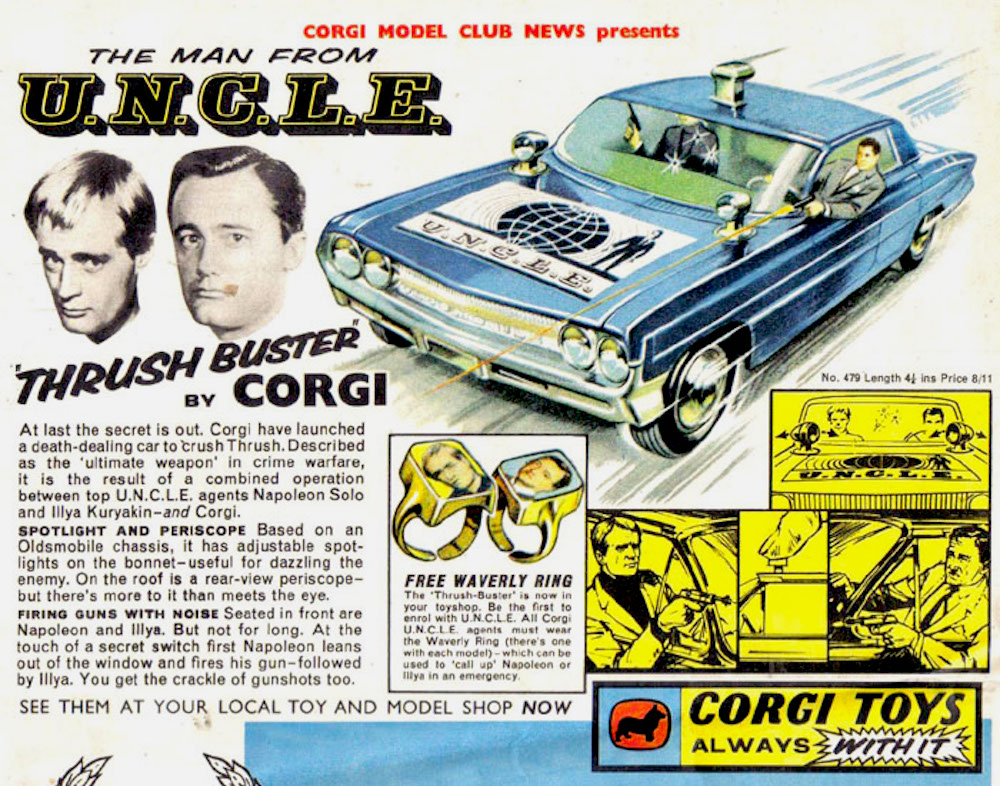
When we played our games of The Man (Boys) from U.N.C.L.E. we both wanted to be Illya Kuryakin as he was the more exotic and interesting character and was played by an actor from Scotland, David McCallum. We were Scottish and our nationalism kicked in. As my brother was older he always had first choice. Therefore, I was Napoleon Solo who always seemed second best and a little bit smarmy. I really should have been far more grateful as Napoleon Solo had been created by Ian Fleming who had originally co-devised the series with English producer Robert Felton. Fleming wrote a treatment on five blank telegram sheets and sold his idea for a pound. He also gave Solo a female sidekick April Dancer, who later had her own series The Girl for U.N.C.L.E.
On my fifth birthday, I was given The Man from U.N.C.L.E. attache case. This vinyl-covered carry case contained a gun, a shoulder holster, two walkie-talkies, a badge (#11), a wallet, and some other things which I can no longer remember. The walkie-talkies never seemed to work, while the gun was certainly exciting but as my brother was still Illya Kuryakin I never had any enemies to shoot. I didn’t know any villains, well, not yet, and the only felons were all safely locked-up in Saughton Prison about half-a-mile away from our house. One night a prisoner escaped, the sirens sounded and radio broadcast warnings to local residents to lock all their windows and doors and keep a lookout for any suspicious characters. My knowledge of prisoners was based mainly on Hannah-Babera cartoons and old silent movies and I thought an escaped criminal would be easy to find as the arrows on his prison uniform would surely point him out.
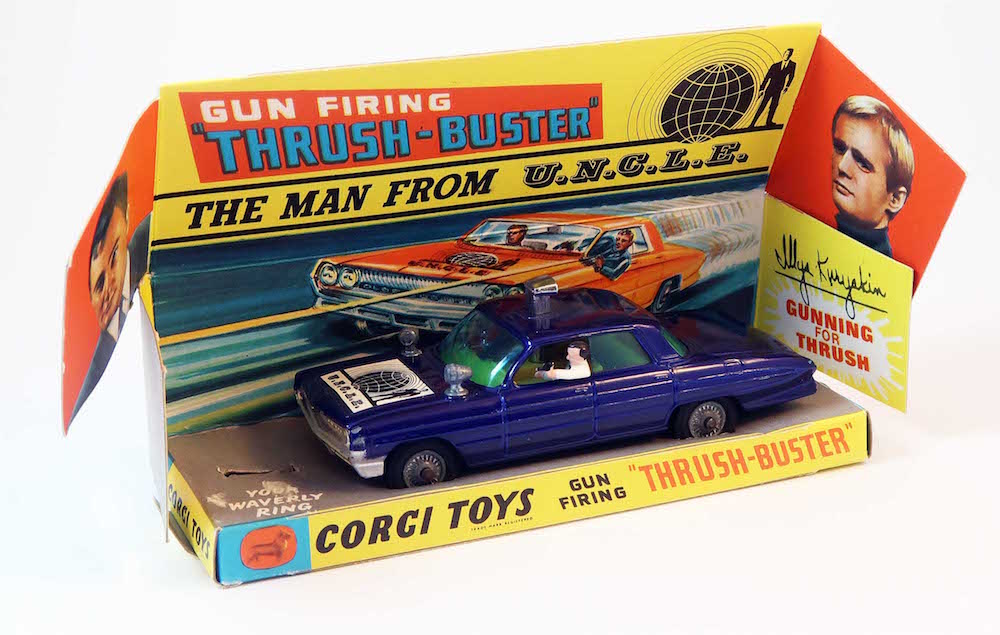
When Santa brought The Man from U.N.C.L.E. THRUSH Buster one Christmas, I learnt two lessons about spy craft in very quick succession. This rather delightful toy came with a small signet ring with a shimmering image that alternated between pictures of Napoleon Solo and Illya Kuryakin depending how it was moved. One day, I foolishly brought it to school and proudly showed it off. A boy I’d never seen before asked to see the ring. He said he wanted to show me a trick. He asked me to close my eyes and spread out my fingers. I did as requested. Moments later, the boy and my ring were gone. A spy should never trust anyone as they will cheat and rob and probably kill you.
The final lesson came from the car itself. This rather delightful metal and plastic vehicle with a silver push button its roof that caused a plastic Solo and Kuryakin to pop out the windows with guns in hand obviously taking potshots at some ne’er-do-well was at first a joy. Then, one day, when recovering from Mumps or Measles or whatever it was I had, I lay in front of the two-bar electric fire in the living room and examined this small toy car in my hand and realised this mass-produced piece of product only meant something because of the life my imagination gave it. I felt somehow cheated and thought I could come up with better games to play.
Not long after this small epiphany, man landed on the Moon. A new sweet called Jelly Tots arrived on the market offering a free cardboard space helmet with every 3d packet. I gave up being a spy and started training to become an astronaut.
But that didn’t last long and I returned to spy craft the following year when I picked up a couple of Man from U.N.C.L.E. paperbacks (The Copenhagen Affair #3 and The Stone Cold Dead in the Market Affair #4) by Welsh writer John Oram at a school fete. The books were intriguing. The first dealt with Nazis, the second (and weaker of the two) was set in Wales. It set me on a quest to read all the others in the series. In America there were 23 books published. In Britain only sixteen were published between 1965 and 1968. I managed to collect thirteen books, of which the best are written by David McDaniel—The Dagger Affair #6, The Vampire Affair #9, and The Monster Wheel Affair #12. McDaniel’s stories are clever and amusing and he also explained the meaning of the acronym T.H.R.U.S.H. as Technological Hierarchy for the Removal of Undesirables and the Subjugation of Humanity, which was supposedly founded by Sherlock Holmes’ nemesis and “second most dangerous man in London” Colonel Sebastian Moran. THRUSH was originally called WASP but the name was changed due to issues of copyright as WASP was the name used in Gerry Anderson’s Stingray for the World Aquanaut Security Patrol. These are fine books (especially McDaniel’s), but obviously not as good as Ian Fleming’s or Len Deighton’s. The books were briefly reissued in the 1990s and more recently a series of new U.N.C.L.E. books have been released by LM Publishers.
#1: Michael Avalone wrote the first ‘Man from U.N.C.L.E.’ novel which mainly featured Napoleon Solo taking on a THRUSH plan to unleash germ warfare on the world. Avalone was a prolific wordsmith and wrote many cult classic novelisations including one for Sam Fuller’s ‘Shock Corridor’ which is well-worth seeking out.
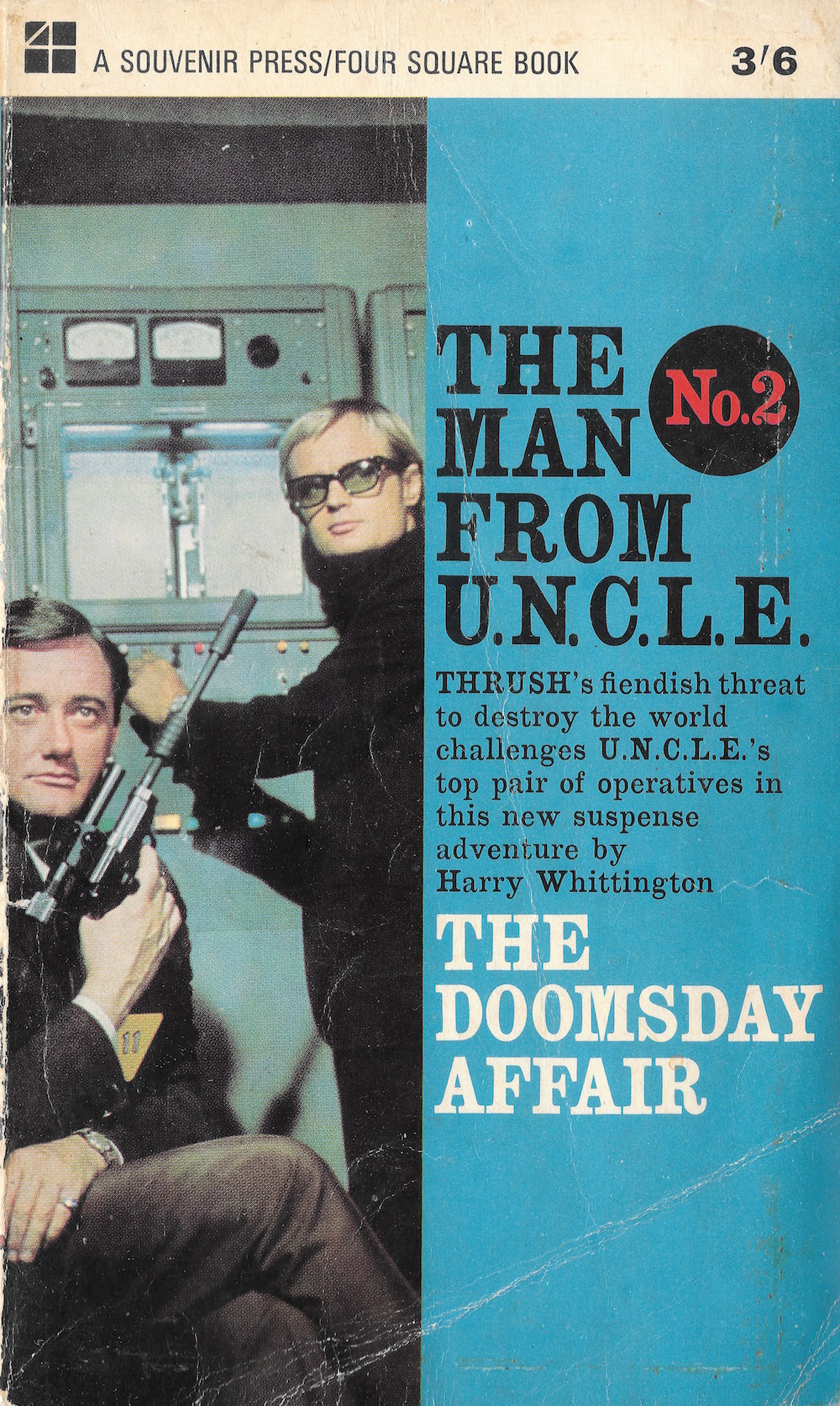
#2: From the pen of crime thriller and western writer Harry Whittington comes ‘The Doomsday Affair’ a hardboiled tale of Solo and Illya Kuryakin pitting their wits against an evil villain Tixe Ylno, who’s set on a course for…er…world domination. Rather good.
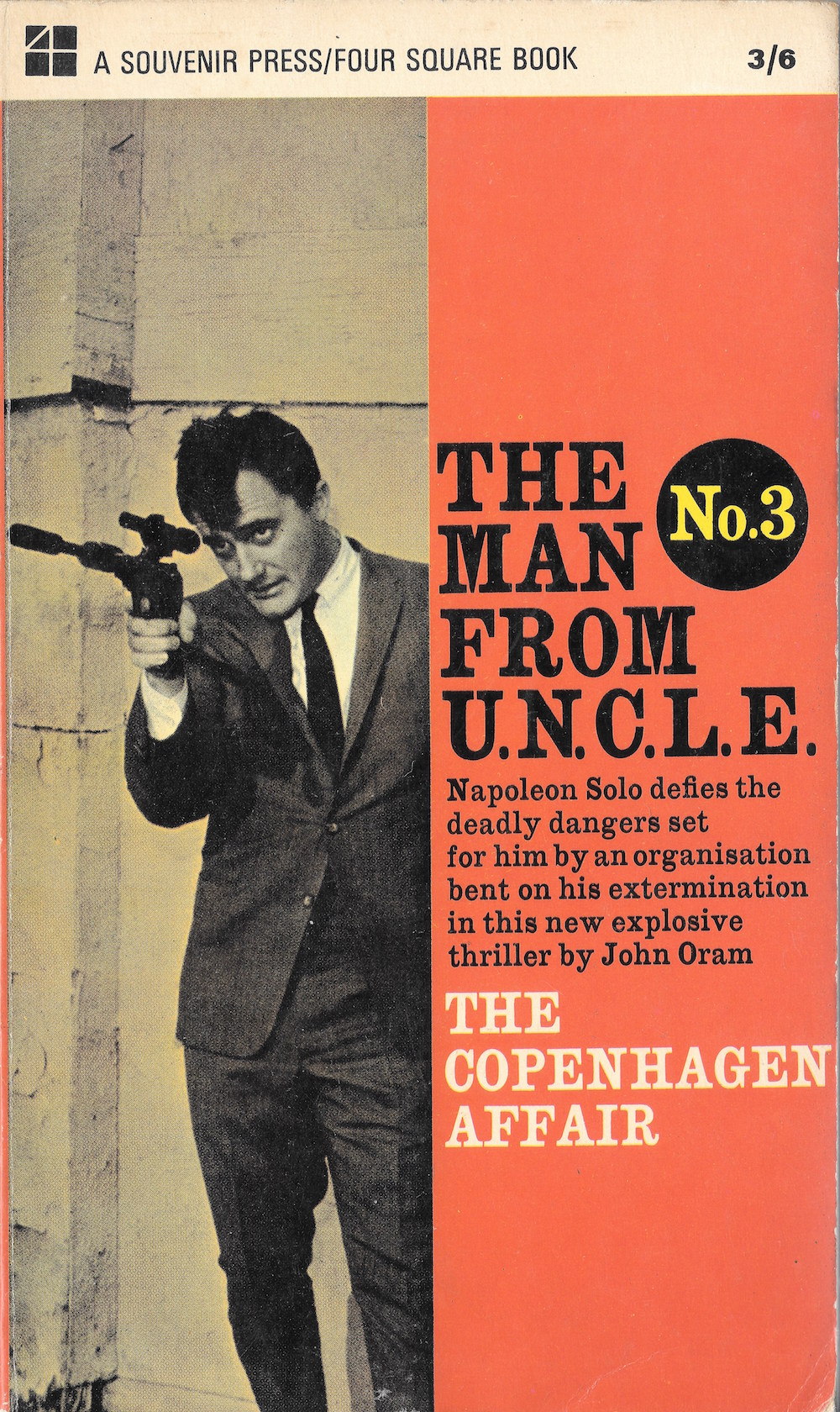
#3: John Oram’s ‘The Copenhagen Affair’ is a festive Christmas tale of ex-Nazis, top secret weapons, and more wannabe world domination.
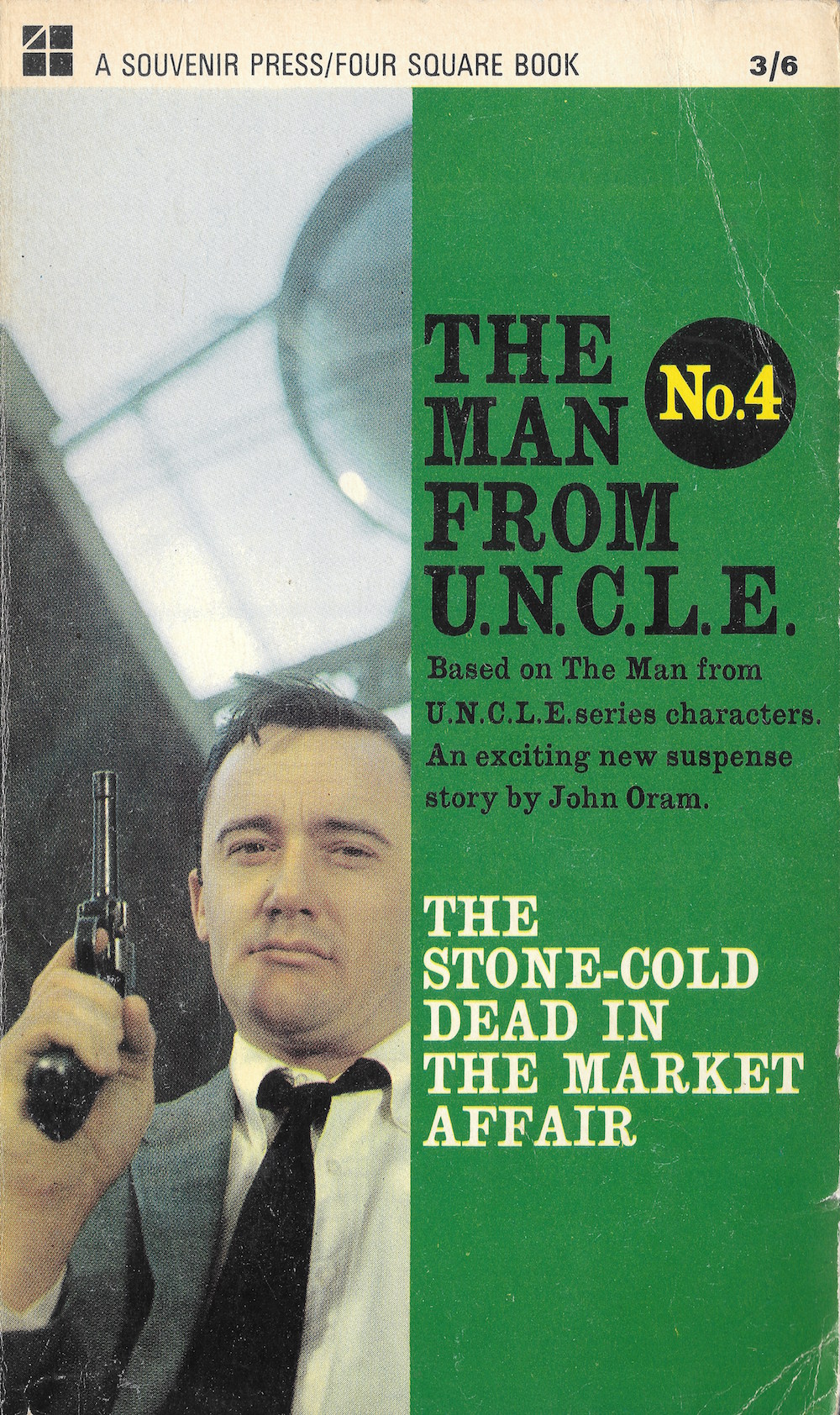
#4: Welsh writer John Oram’s second entry ‘The Stone Cold Dead in the Market Affair’ is set in Wales and is a bit of a hit-and-miss affair. Not as good as its predecessor.
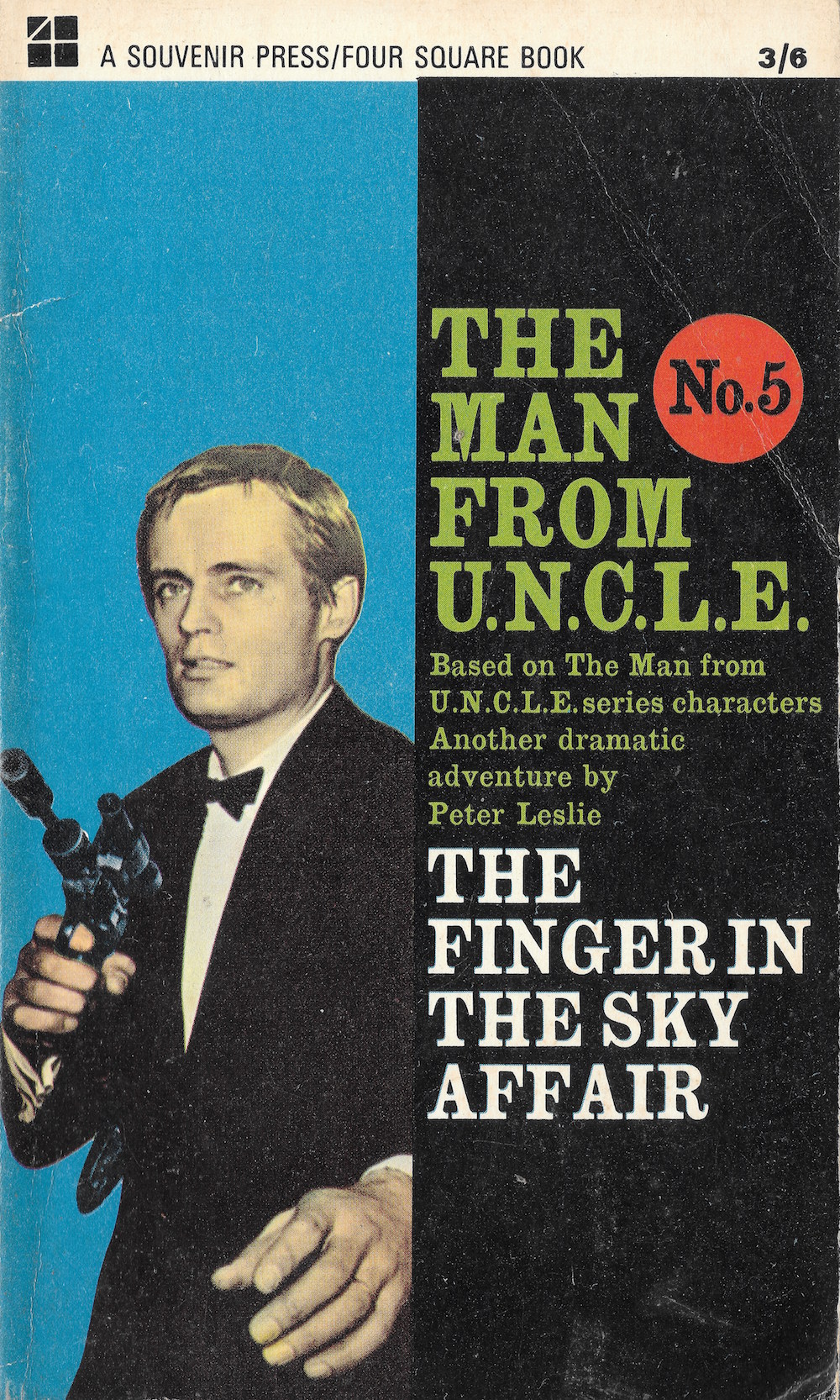
#5: British writer Peter Leslie (aka Ed Mazarro) is probably best known for his seres of Mack Bolan and ‘Executioner’ novels. His contribution to the ‘Man from U.N.C.L.E.’ series is the rather ingenious and well-plotted ‘The Finger in the Sky Affair’ a tale of THRUSH devising a way to down airplanes in France.
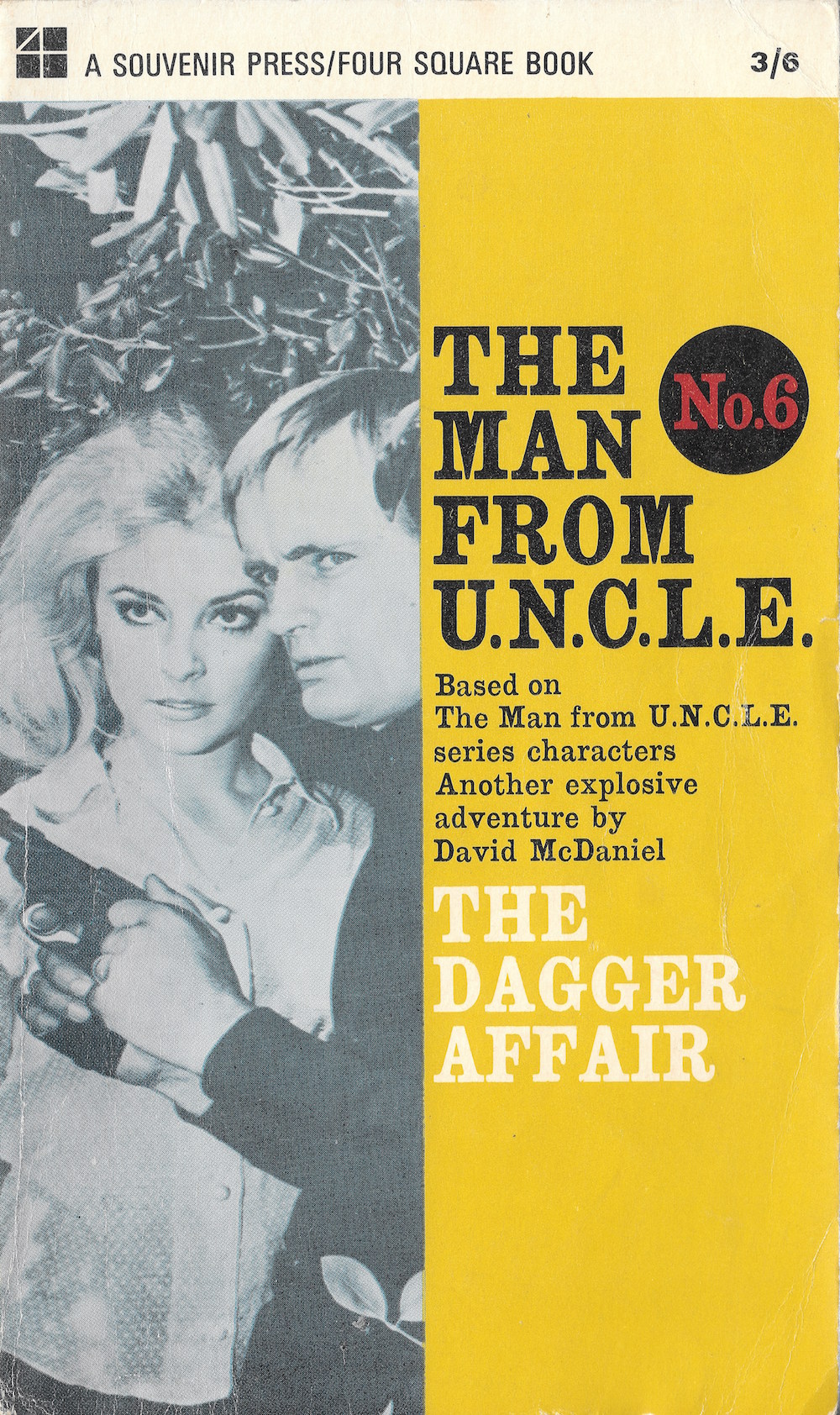
#6: The first real classic of the series ‘The Dagger Affair’ comes from the pen of David McDaniel. A thrilling tale which sees the unlikely alliance of U.N.C.L.E. and THRUSH combining forces to defeat an evil and murderous organisation known as DAGGER. This is the book where we are told that THRUSH was the idea of Sherlock Holmes’ nemesis Col. Sebastian Moran.
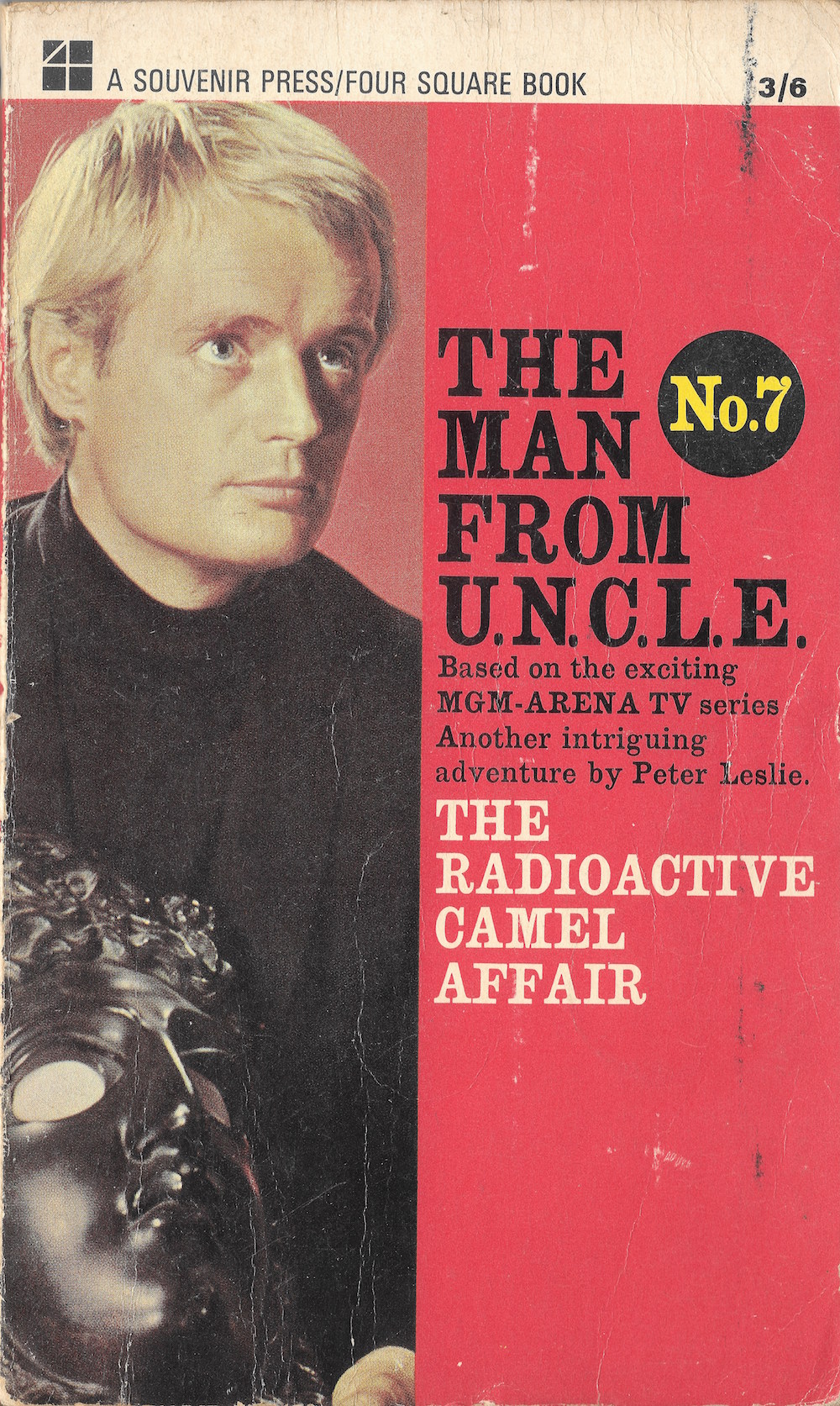
#7: Peter Leslie’s second entry into the series ‘The Radioactive Camel Affair’ is his best. A tale of THRUSH agents seeking out nuclear missiles to wreak havoc. Some fine writing, a good plot and some cracking characters.
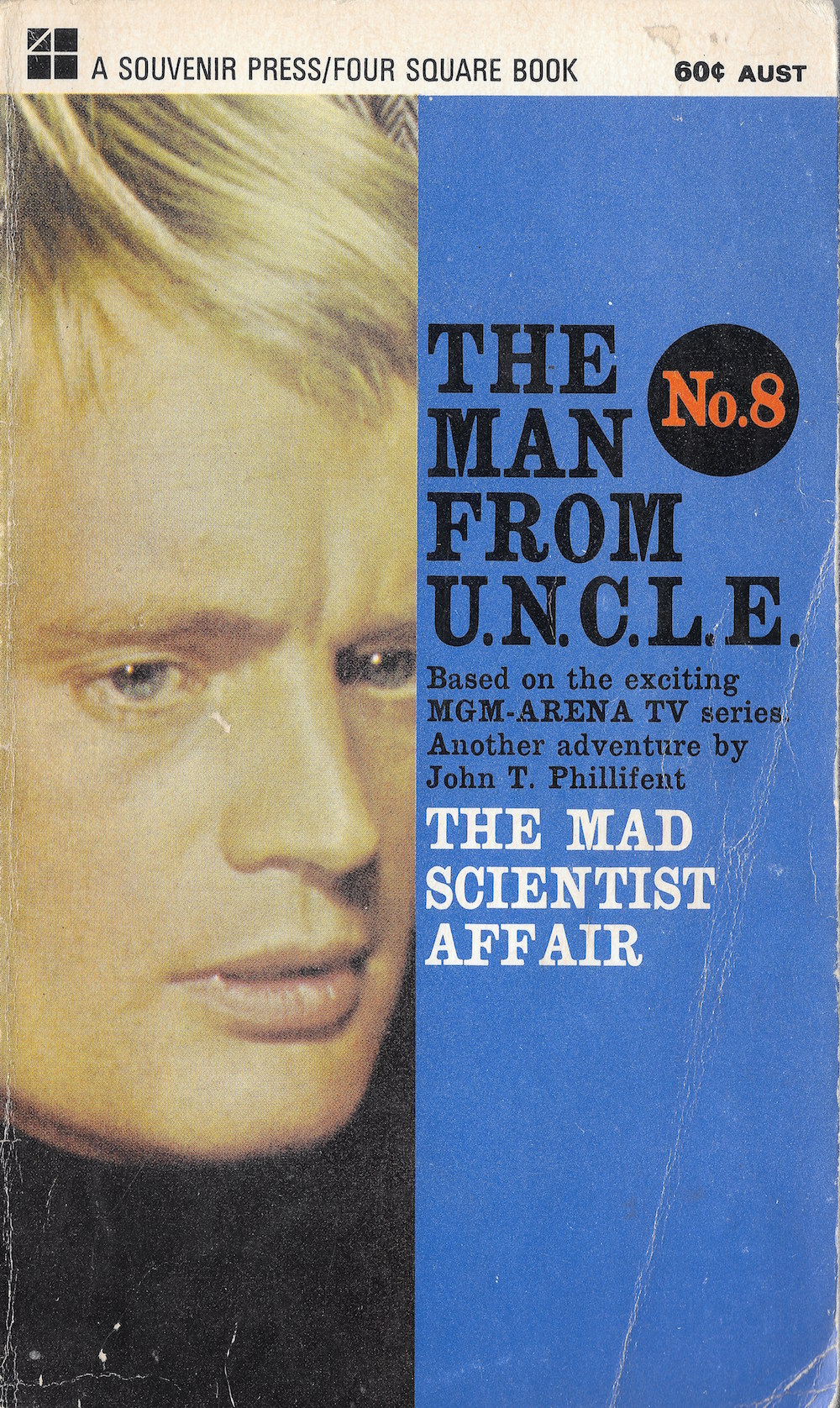
#8: British writer John T. Phillifent (aka John Rackham) was a sci-fi and fantasy writer who is credited with ‘Rackham’s Law’, which Frederick Pohl said was the ‘comprehensive definition’ of science fiction. This was writing sci-fi through a ‘scientific method’–basically looking at the world, dissecting it and reassembling the parts into a ‘what if’ scenario. Phillifent was also an electrical engineer. His entry into the series was ‘The Mad Scientist Affair’ (natch) which dealt with..er..a mad scientist in his gothic castle planning to..er, not again…take over the world. It’s not unlike Ian Fleming’s ‘Moonraker’ but not as good.
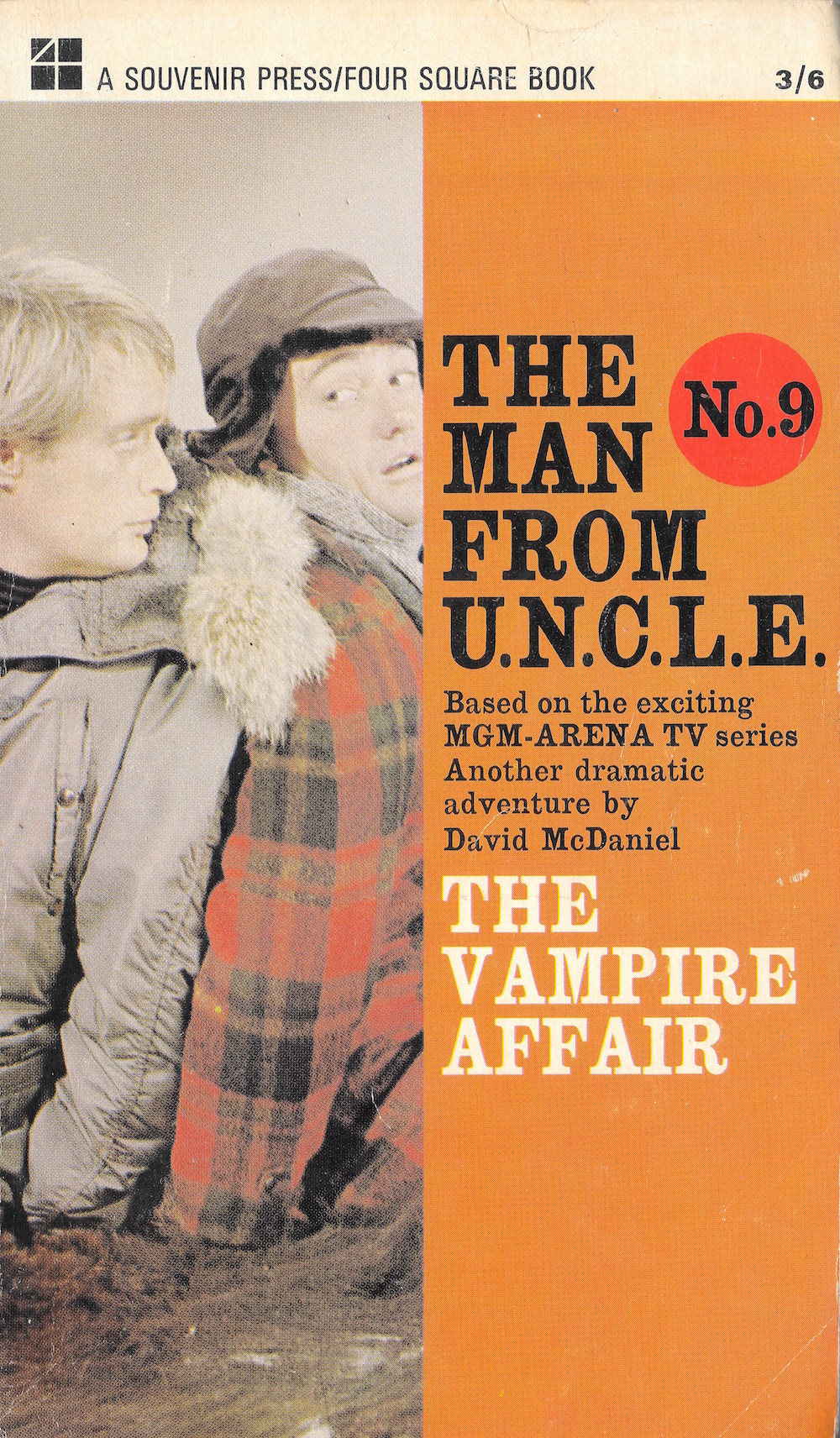
#9: ‘The Vampire Affair’ is another classic from David McDaniel in which an U.N.C.L.E. agent is found dead in Transylvania with the only sign of his possible murder being two puncture wounds to his neck. A grand mix of horror, superstition, and spying with a guest appearance by real-life cult hero Forrest J. Ackerman.
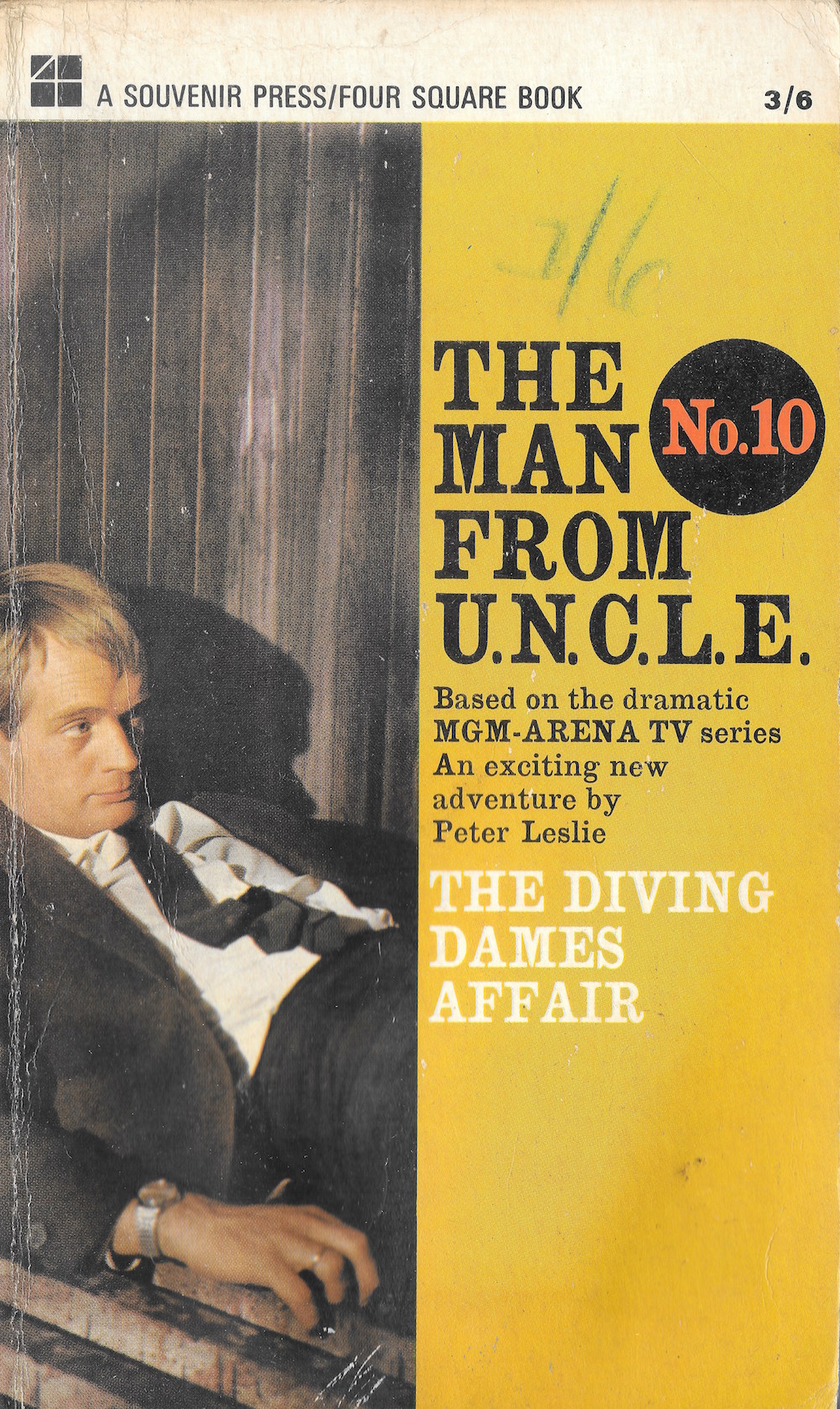
#10: Peter Leslie’s ‘The Diving Dames Affair’ concerns the mysterious (they’re always mysterious, aren’t they?) deaths of two young women in Brazil. When Solo and Kuryakin investigate, they uncover a nefarious plot to destroy the world. An okay entry, but seems like a rehash of other stories.
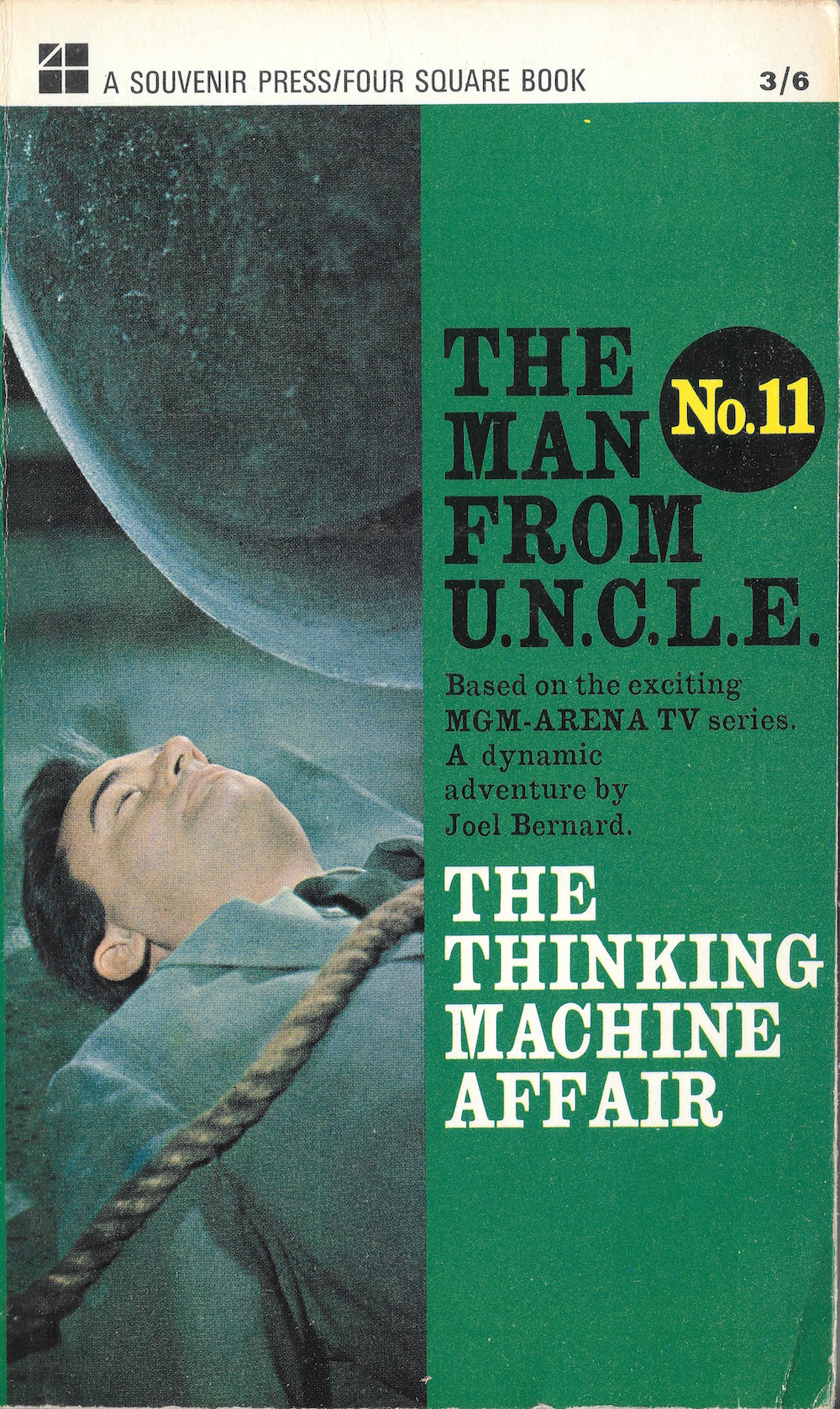
#11: Joel Bernard’s ‘The Thinking Machine Affair’ is more sci-fi than I-spy. Solo and Kuryakin are in a race against THRUSH to get their hands on a machine that can control people’s minds.
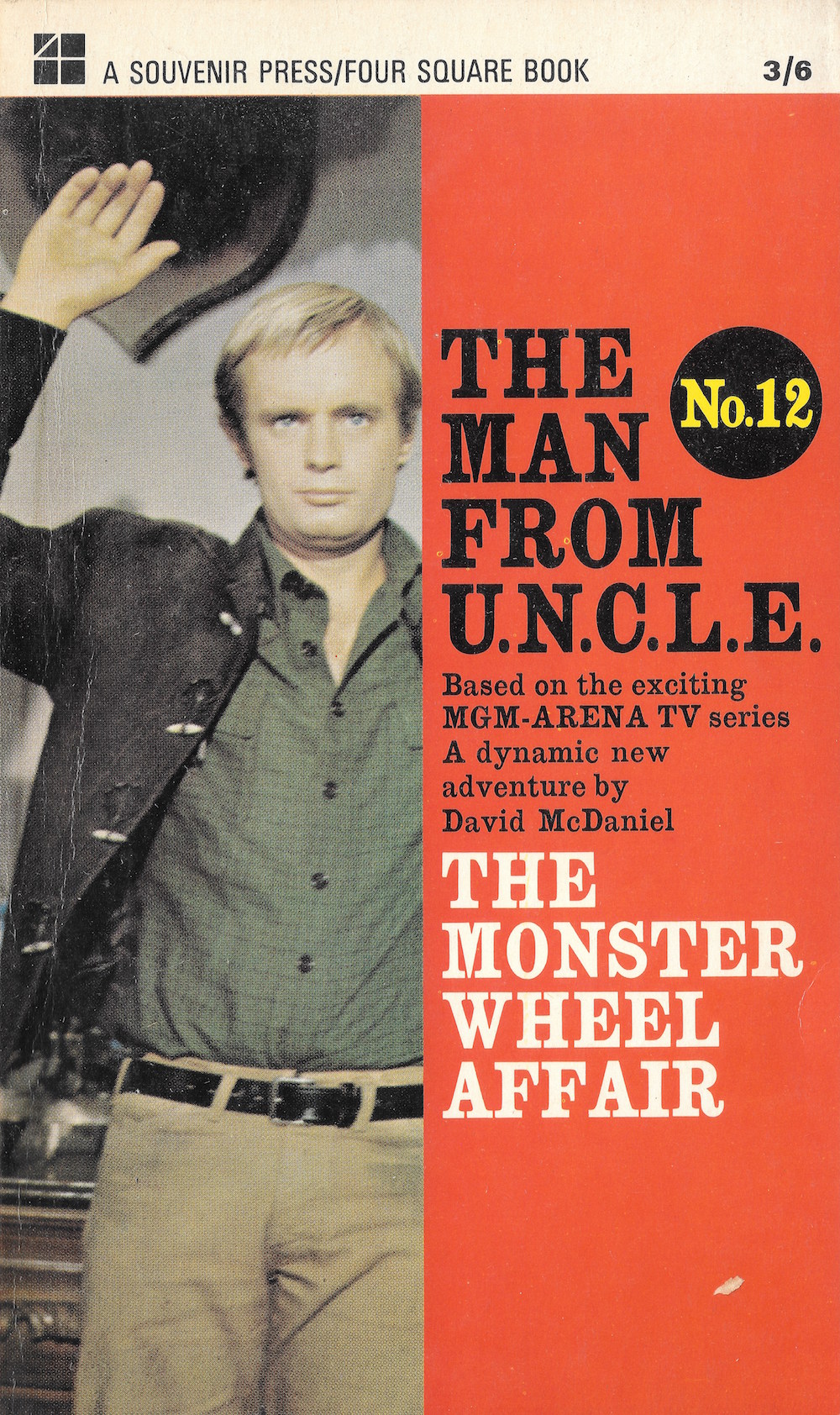
#12: ‘The Monster Wheel Affair’ is a fast-and-furious tale by David McDaniel featuring an unidentified space satellite menacing Earth. Full of exotic locations and plenty of gadgets.
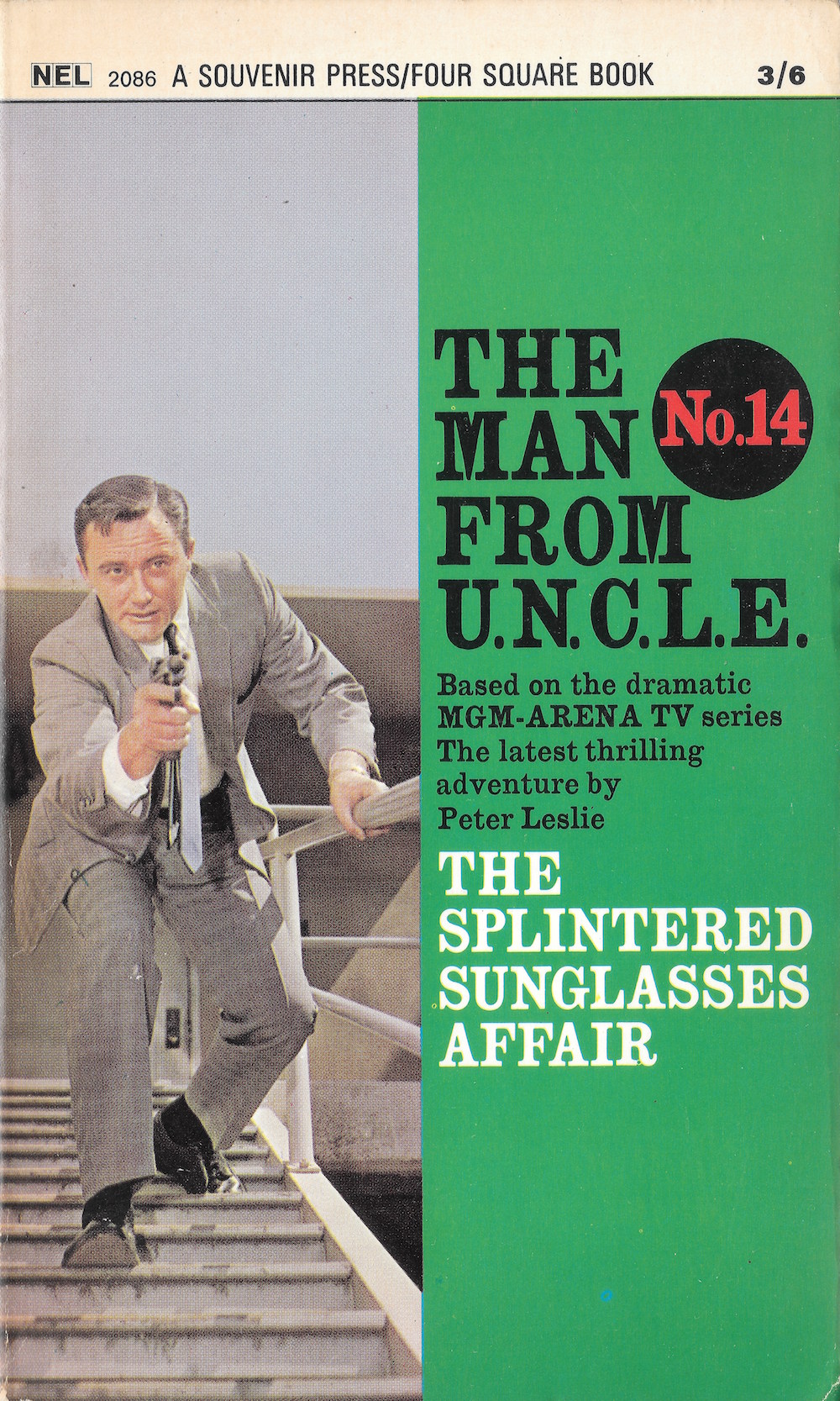
#14: ‘The Splintered Sunglasses Affair’ is another good tale from Peter Leslie which sees Napoleon Solo being kidnapped. Who’s behind this and why? Can Illya Kuryakin rescue his crime-fighting buddy? Or, will Solo manage to make his own escape?
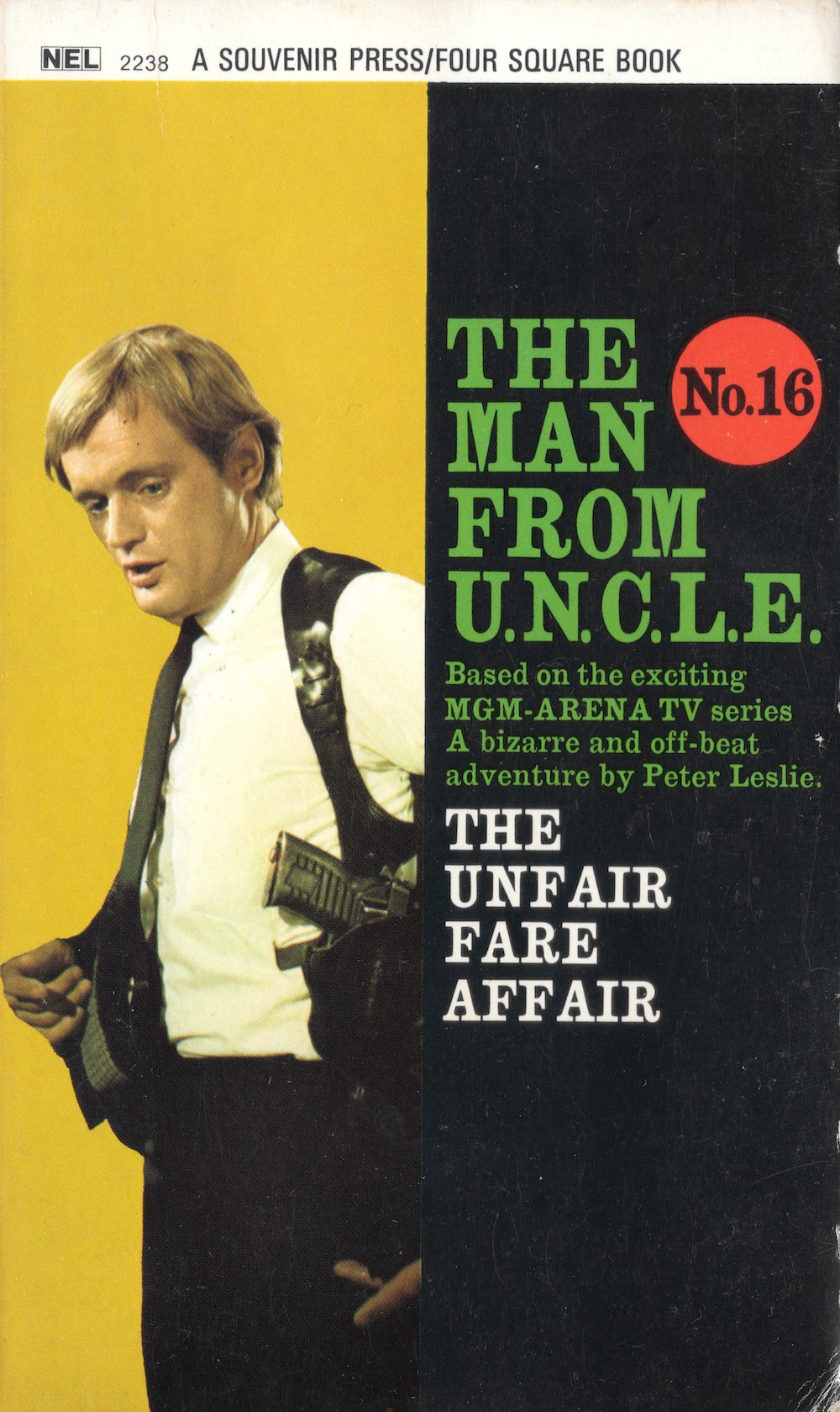
#16: Peter Leslie’s ‘The Unfair Fare Affair’ concerns Mr. Waverly uncovering a gang who organise prison escapes. At times tedious mainly because Leslie was probably being paid by the word as he uses 25-words where three would do.
What I missed:
#13: ‘The Corfu Affair’ by John T. Phillifent features evil mastermind the Countess Anne-Marie Louise de St.-Denis who kills an U.N.C.L.E. agent and wants world domination (quelle surprise..?). Solo uses his charm and smarts to take her on.
#15: ‘The Power Cube Affair’ is another mish-mash of sci-fi and spy craft from John T. Phillifent featuring the hunt for the pieces of a splintered magic cube which once assembled can give the owner…er..world domination.
Would you like to support Flashbak?
Please consider making a donation to our site. We don't want to rely on ads to bring you the best of visual culture. You can also support us by signing up to our Mailing List. And you can also follow us on Facebook, Instagram and Twitter. For great art and culture delivered to your door, visit our shop.
